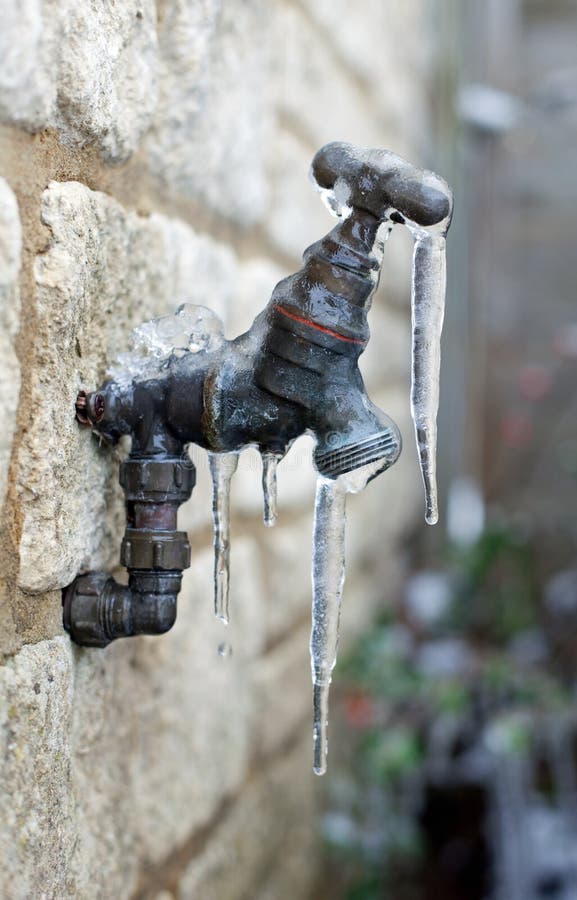They are making a few good points on the subject of How to prepare your home plumbing for winter weather overall in this content down the page.

Cold weather can damage your plumbing, especially by freezing pipes. Right here's how to stop it from occurring and what to do if it does.
Introduction
As temperature levels drop, the danger of frozen pipelines rises, potentially bring about expensive fixings and water damage. Recognizing how to avoid icy pipes is important for property owners in cool environments.
Understanding Frozen Pipelines
What creates pipelines to ice up?
Pipes freeze when subjected to temperatures listed below 32 ° F (0 ° C) for prolonged periods. As water inside the pipes ices up, it broadens, putting pressure on the pipeline walls and possibly creating them to rupture.
Risks and problems
Frozen pipes can bring about water disturbances, building damages, and costly repairs. Burst pipelines can flood homes and create considerable architectural damages.
Indicators of Frozen Water Lines
Determining frozen pipelines early can avoid them from bursting.
Just how to recognize icy pipes
Seek reduced water circulation from faucets, uncommon odors or sounds from pipes, and visible frost on revealed pipelines.
Prevention Tips
Shielding vulnerable pipes
Cover pipes in insulation sleeves or utilize warmth tape to protect them from freezing temperatures. Focus on pipelines in unheated or external locations of the home.
Heating methods
Maintain indoor rooms sufficiently warmed, particularly areas with pipes. Open up closet doors to permit cozy air to flow around pipelines under sinks.
Shielding Outside Pipes
Garden tubes and outside faucets
Disconnect and drain pipes yard hose pipes prior to winter season. Set up frost-proof faucets or cover outside taps with insulated caps.
What to Do If Your Pipes Freeze
Immediate activities to take
If you suspect frozen pipelines, maintain taps open to eliminate stress as the ice melts. Utilize a hairdryer or towels soaked in warm water to thaw pipes slowly.
Long-Term Solutions
Structural adjustments
Take into consideration rerouting pipes far from exterior walls or unheated locations. Include extra insulation to attics, cellars, and crawl spaces.
Updating insulation
Purchase high-quality insulation for pipes, attics, and walls. Appropriate insulation aids keep regular temperatures and reduces the risk of frozen pipelines.
Final thought
Protecting against icy pipelines calls for aggressive procedures and fast actions. By comprehending the causes, indications, and preventive measures, property owners can safeguard their plumbing throughout cold weather.
5 Ways to Prevent Frozen Pipes
Drain Outdoor Faucets and Disconnect Hoses
First, close the shut-off valve that controls the flow of water in the pipe to your outdoor faucet. Then, head outside to disconnect and drain your hose and open the outdoor faucet to allow the water to completely drain out of the line. Turn off the faucet when done. Finally, head back to the shut-off valve and drain the remaining water inside the pipe into a bucket or container. Additionally, if you have a home irrigation system, you should consider hiring an expert to clear the system of water each year.
Insulate Pipes
One of the best and most cost-effective methods for preventing frozen water pipes is to wrap your pipes with insulation. This is especially important for areas in your home that aren’t exposed to heat, such as an attic. We suggest using foam sleeves, which can typically be found at your local hardware store.
Keep Heat Running at 65
Your pipes are located inside your walls, and the temperature there is much colder than the rest of the house. To prevent your pipes from freezing, The Insurance Information Institute suggests that you keep your home heated to at least 65 degrees, even when traveling. You may want to invest in smart devices that can keep an eye on the temperature in your home while you’re away.
Leave Water Dripping
Moving water — even a small trickle — can prevent ice from forming inside your pipes. When freezing temps are imminent, start a drip of water from all faucets that serve exposed pipes. Leaving a few faucets running will also help relieve pressure inside the pipes and help prevent a rupture if the water inside freezes.
Open Cupboard Doors
Warm your kitchen and bathroom pipes by opening cupboards and vanities. You should also leave your interior doors ajar to help warm air circulate evenly throughout your home.

I am very interested by 6 Ways to Prevent Frozen Pipes and I'm hoping you liked the entire page. If you please take a moment to distribute this blog post if you liked it. We love reading our article about How To Avoid Freezing Pipes.
Go Company
Comments on “Advice for Preventing Frozen Plumbing in Cold Weather: Professional Tips”